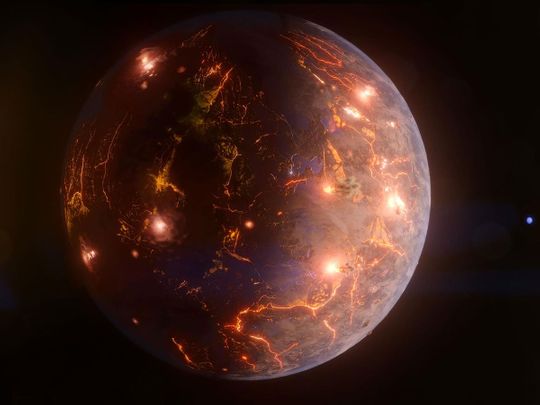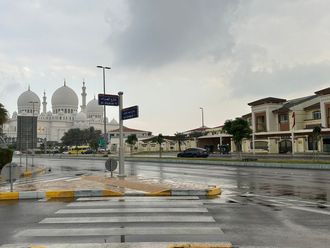
Abu Dhabi: An Abu Dhabi researcher has contributed to studies that led to the discovery of an Earth-sized exoplanet that may be carpeted with volcanoes and also be hospitable to life.
Dr Mohamad Ali-Dib, a research scientist at the NYU Abu Dhabi (NYUAD) Centre for Astro, Particle, and Planetary Physics made contributions to work led by the University of Montreal towards the discovery of the new exoplanet, a planet beyond our solar system. Called LP 791-18 d, the planet could undergo volcanic outbursts as often as Jupiter’s moon Io, the most volcanically active body in our solar system.
The planet was found and studied using data from NASA’s Transiting Exoplanet Survey Satellite (TESS), the Spitzer Space Telescope, as well as a suite of ground-based observatories. Dr Ali-Dib specifically led the study of the planetary system’s stability and discovered that the orbits of its planets are long-term stable. His work moreover put significant constraints on the presence of additional unknown earth-sized planets in the system, as these might destabilise its orbits.
Journal publication
In the paper titled ‘A temperate Earth-sized planet with tidal heating transiting an M6 star’, which published in the journal Nature, the researchers explain how they detected and studied the new planet. LP 791-18 d was discovered orbiting a small red dwarf star located approximately 90 light-years away in the southern constellation Crater. Researchers estimate that the newly discovered planet is only slightly larger and more massive than Earth. There are two other previously known planets in this system, referred to as LP 791-18 b and c. Each time planets c and d passed each other in orbit, the larger planet c produced a gravitational pull on planet d. This consistently deformed planet d and created an internal friction, which substantially heated the planet’s interior and produced volcanic activity at its surface.
Read More
- UAE astronaut Sultan Al Neyadi ready for mission to relocate SpaceX Dragon on May 6
- Look: UAE astronaut Sultan Al Neyadi shares breathtaking ‘starry’ view of Dubai from space
- UAE astronaut Sultan Al Neyadi to relocate SpaceX Dragon that launched him to International Space Station
- Watch: Dragon Spacecraft with Al Neyadi successfully docks with Harmony's forward port
Possibility of water
The study moreover noted that LP 791-18 d is tidally locked, meaning it has one side that permanently faces its star, while the other is in continuous darkness. Tidal-locking, in addition to the significant amount of volcanic activity suspected across the planet would enable LP 791-18 d to sustain an atmosphere, and allow water to condense on its night side. This is significant, because the ability of a planet to sustain water in liquid form is key to its potential habitability.
Planet LP 791-18 c was recently approved to be observed using NASA’s James Webb Space Telescope. The findings of the new paper indicate that LP 791-18 d should be similarly studied to further investigate its ability to sustain life.
“The discovery of an Earth-size planet in the habitable zone that is potentially volcanically active is a huge step forward in the search for life outside the solar system. The next step is to observe the system using the JWST to see what it can tell us about its atmosphere,” Dr Ali-Dib said.












